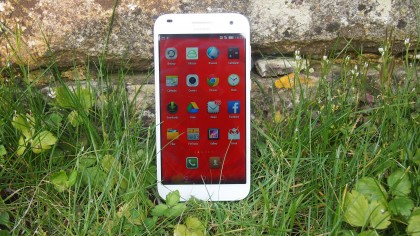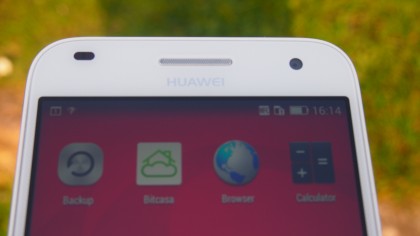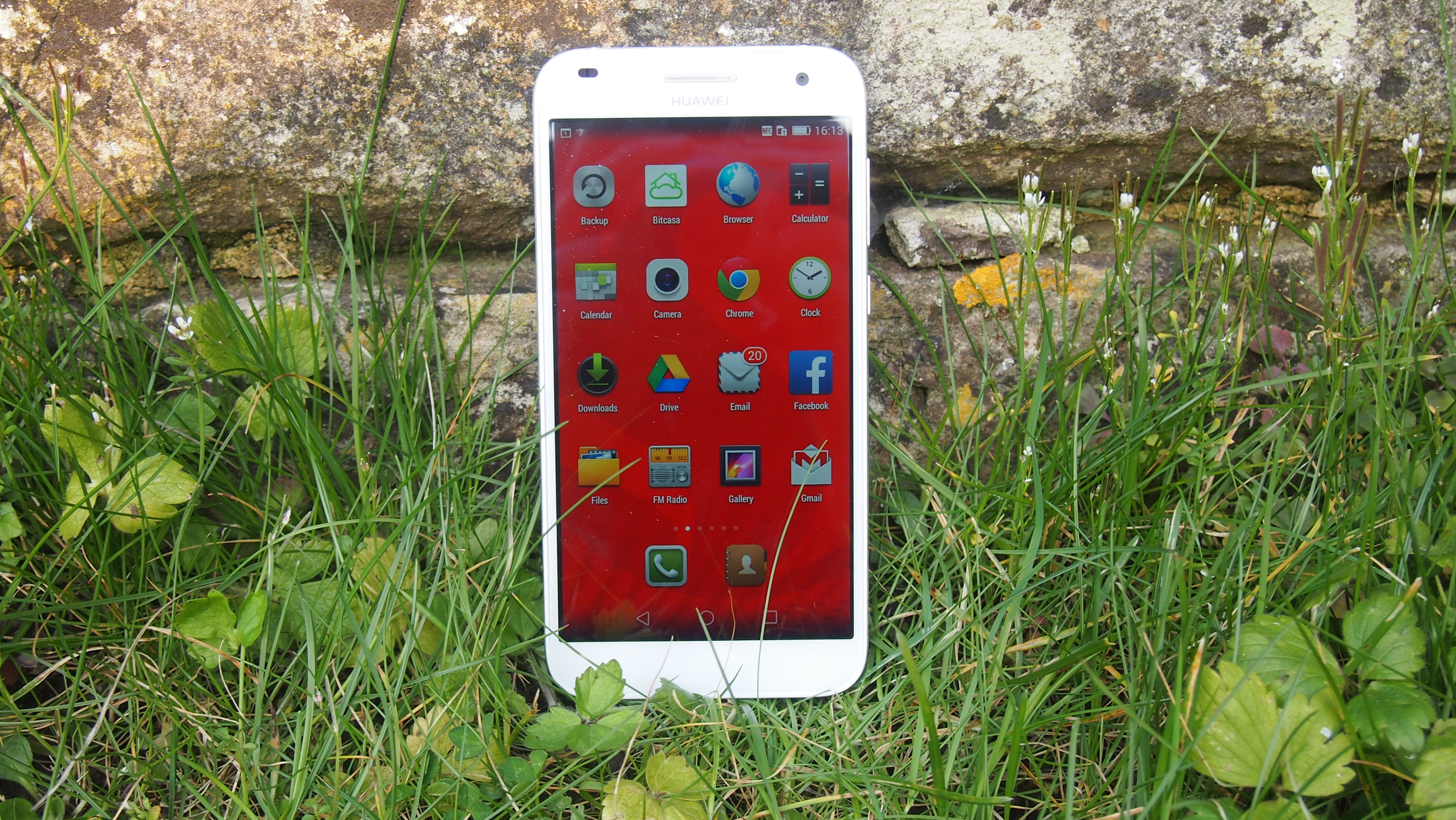Why you can trust TechRadar
Besides the design, the large 5.5-inch screen is the main talking point of the Huawei Ascend G7 – but is it for the right reasons?
Large-screen 'phablet' devices that bridge the divide between smartphones and tablets have been popular for a while, since Samsung proved that there is a healthy market for large-screen smartphones with the Galaxy Note back in 2012.
Since then, there has been a healthy stream of smartphones with big displays coming out, with even Apple joining the phablet party with the launch of the iPhone 6 Plus last year.
Sticking any old large screen on a smartphone isn't a recipe for instant success, however, with larger displays being more unforgiving with lower resolutions and cheaper technology – and sadly this is where the Huawei Ascend G7 reveals its budget origins.

The screen of the G7 features a rather middling resolution of 720 x 1280, which stretched over 5.5-inches gives a pixel density of 267ppi (pixels per inch). The more pixels your smartphone's display packs into each inch, the sharper and clearer the display is. Fewer pixels over a larger area results in a reduction in image quality, which unfortunately is often evident when using the G7.
The OnePlus One offers the same 5.5-inch screen size, but packs a higher resolution of 1080 x 1920, leading to a pixel density of 401ppi. The difference in image quality between the two devices is stark, proving that when it comes to screens, size really isn't everything.
However, I should point out that you rarely see a screen this size on a smartphone that costs as little as the Ascend G7, so it would be unfair to expect the same level of technology that is present in phones that cost twice or even three times as much.
The large size and lower resolution of the screen does have its benefits as well, and before you go to grab the pitchforks or book me an urgent appointment at an opticians, hear me out.

A 5.5-inch screen is large for a smartphone, however it is still a relatively small display area, and the higher the resolution that you pack into that space, the smaller some elements, such as icons and text, appear.
This can make reading or using the smartphone uncomfortable and occasionally frustrating. A larger screen with a lower resolution means bigger icons, which are easier to hit with your finger, along with text that can be read without straining.
It means if you want a large screen but image quality is the be-all and end-all, then the Ascend G7 will be a disappointment, and it also means you're going to have to look at increasing your budget. However, if you don't mind a few compromises to image quality, and just want a large screen for a low price, then the Ascend G7 could be for you.
The lower resolution means the Ascend G7 doesn't have to work so hard displaying web pages, media and games, which leads to a relatively smooth experience. Android 4.4 KitKat looks perfectly fine at this resolution, and websites – especially text-heavy ones – are clear and easy to read.
The fact that the screen is a decent IPS affair means that contrast is good, and even viewing the screen from an angle produces good, but not exceptional, results.
Price is everything
The other important feature of the Ascend G7 is its price, and in this regard I can't really fault it. For just £199 (around $296, AU$385) you get a lot of features that are normally the preserve of smartphones that are a lot more expensive.
The inclusion of 4G LTE is incredibly welcome, and ensures that despite its price, the Ascend G7 isn't going to feel outdated any time soon thanks to its ability to connect to fast, and dependable, mobile data networks.
An increasing number of budget handsets are including 4G, although it's still not a given that you'd get it in phones at this price range, so it's nice to see it included here.
Other touches, such as 16GB onboard storage (where some budget smartphones still try to palm us off with 8GB at this price point), and Near Field Communication, also prove that the Ascend G7 is excellent value for money.

Matt is TechRadar's Managing Editor for Core Tech, looking after computing and mobile technology. Having written for a number of publications such as PC Plus, PC Format, T3 and Linux Format, there's no aspect of technology that Matt isn't passionate about, especially computing and PC gaming. He’s personally reviewed and used most of the laptops in our best laptops guide - and since joining TechRadar in 2014, he's reviewed over 250 laptops and computing accessories personally.
